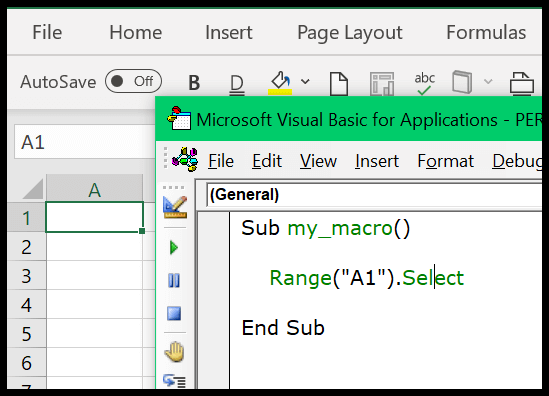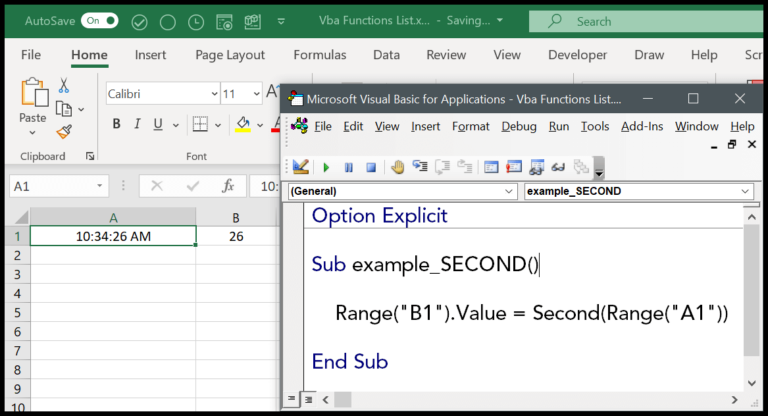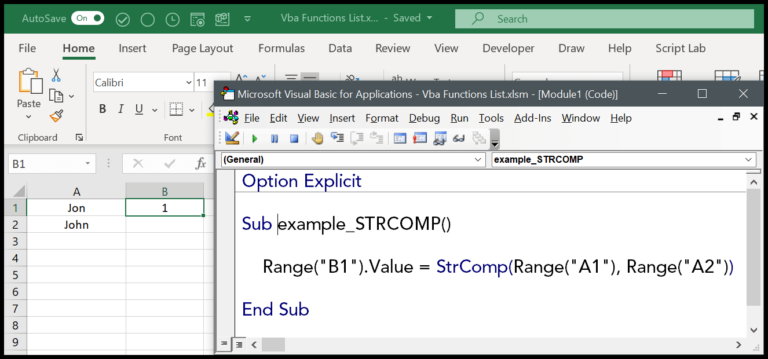Sales prospecting is the lifeblood of any revenue-generating business operation. Finding the right leads and converting them into customers is a challenge that sales teams constantly face. Leveraging the right tools can make this daunting task a lot more manageable. These software options are designed to automate the most time-consuming processes, helping salespeople focus on what they do best—building relationships and closing deals.
Prospecting tools come in various forms, from databases that offer millions of business contacts to platforms that streamline multi-channel outreach such as email, phone, and social media. These tools are not just about finding new leads; they assist sales professionals in qualifying and prioritizing potential customers, ensuring their time is spent on the most promising prospects.
As the market floods with options, it’s crucial for businesses to select the right sales prospecting software that fits their unique needs. Whether looking for a solution with a comprehensive suite that covers every stage of the sales process, or a simple tool that provides accurate contact information, there’s an array of choices. Some of these tools even offer free trials or versions, allowing teams to take them for a spin before committing financially.
Understanding Sales Prospecting
Sales prospecting is a crucial part of the sales process; it’s about identifying potential customers and actively searching for them. It’s the first step that fuels the sales pipeline and can significantly impact a business’s revenue.
Definition and Importance
Sales prospecting is the strategic process of searching for potential buyers or clients to convert into new business. This step is non-negotiable if one’s aim is to sustain and grow the business.
The importance of prospecting cannot be overstated. It’s a fundamental activity that:
- Maintains a healthy sales pipeline.
- Drives consistent revenue growth.
- Identifies new market opportunities.
- Helps in allocating resources efficiently.
Prospecting vs. Lead Generation
While often used interchangeably, prospecting and lead generation are distinct.
- Lead Generation is casting a wide net to bring in anyone who could be interested in the offer.
- Prospecting is a more targeted approach, prioritizing and engaging with contacts who are assessed as likely to buy.
Comparison Table:
| Activity | Goal | Focus |
|---|---|---|
| Lead Generation | Attract potential leads | Quantity – More leads |
| Prospecting | Convert contacts to customers | Quality – Right leads |
It’s important to recognize that effective prospecting can shape the sales pipeline and foster a steady influx of revenue. They avoid spending resources on unlikely leads and streamline their efforts towards promising prospects.
Choosing the Right Prospecting Software
Selecting the right sales prospecting software can significantly streamline the process of identifying and engaging with potential customers. It’s important for sales teams to consider the specific features that match their business needs, whether they operate within a small business or a large corporation, and how well the software integrates with their current Customer Relationship Management (CRM) systems.
Key Features to Look For
When assessing sales prospecting tools, teams should concentrate on automation capabilities that save time by streamlining repetitive tasks. Advanced AI is also a critical feature, as it can improve the quality of prospecting by predicting lead scoring and providing insights. They should also look for software that offers robust engagement tools, allowing for multi-channel outreach including email, social media, and phone communication.
Software for Different Company Sizes
For smaller companies, one should seek prospecting tools that are cost-effective yet scalable as the business grows. Large enterprises might prioritize comprehensive solutions with extensive databases and advanced analytics. The size of a company often dictates the level of customization required in their prospecting software, so a flexible platform is usually preferred.
Integration with CRM
Integration with a company’s existing CRM system is crucial for ensuring a seamless workflow. Sales teams must ensure that the prospecting software can either seamlessly connect with their current CRM or that it provides sufficient in-house CRM functionalities. This connectivity allows for better data management and a unified view of the sales cycle, which can significantly impact the efficiency and effectiveness of sales strategies.
Top Sales Prospecting Tools
In today’s sales environment, having the right toolset is critical for identifying prospects, automating outreach, and ultimately closing deals more efficiently. The top sales prospecting tools on the market are designed to integrate with existing workflows, streamline communication, and provide valuable insights to drive sales forward.
CRM-Based Tools
Salesforce and Pipedrive have positioned themselves as leaders in CRM-based prospecting tools. Salesforce offers a comprehensive suite that’s highly customizable, enabling sales teams to track customer interactions and manage sales pipelines effectively. Pipedrive provides a visual sales pipeline that helps salespeople focus on important deals without getting bogged down by administrative tasks.
AI-Driven Engagement Platforms
Platforms like LinkedIn Sales Navigator and Salesloft leverage AI to help sales teams engage with prospects more effectively. LinkedIn Sales Navigator offers advanced search capabilities to find the right prospects and insights to help understand what matters to them. Salesloft’s platform uses AI to analyze communication patterns and optimize engagement strategies.
Email and Outreach Optimization
For email and outreach, Hunter and Reply are key tools to consider. Hunter is known for its all-in-one email outreach solution, simplifying the process of finding and contacting leads. Reply automates multichannel outreach, helping sales teams touch base with prospects through email, calls, and social touches efficiently.
Data Enrichment and Lead Scoring
Tools such as ZoomInfo, Lusha, and Leadfeeder offer data enrichment services that amplify the quality of sales prospecting endeavors. ZoomInfo provides a vast database for better lead scoring, while Lusha focuses on finding contact information quickly. Leadfeeder identifies companies that visit a website and scores them based on their behavior, which is a powerful indicator of interest.
Effective Prospecting Techniques
In sales prospecting, success hinges on building relationships and leveraging the right tools and techniques. Efforts must be strategically tailored and attuned to the modern buyer’s behaviors and preferences.
Personalized Outreach
Sales reps increase their success rate when they add a personal touch to their communication. It’s about understanding the prospect’s needs and demonstrating genuine interest. Utilizing email templates is efficient, but they should always be customized with the prospect’s name, a reference to their company, or a recent accomplishment to stand out.
Utilizing Social Media
LinkedIn Sales Navigator is a game-changer for prospecting, offering rich filters to find the ideal prospects and InMail to contact them directly. Sales reps can track company updates and job changes within their network—a perfect opportunity to send a timely message. Integrating social media efforts with other prospecting tools ensures a cohesive approach.
Cold Email Best Practices
Sending cold emails remains a staple in prospecting, but the key is in the execution. Email sequences should be carefully crafted, avoiding the generic. The subject line should grab attention, and the body should be concise and relevant. Follow-up emails must be programmed at strategic intervals to keep the prospect engaged without overwhelming them.
Automation and Efficiency
In the fast-paced sales industry, automation tools have become indispensable for ramping up efficiency. They streamline the sales process by handling time-consuming tasks like email verification, updating contact data, and much more.
Prospecting Automation Tools
Prospecting automation tools are designed to take the grunt work out of finding and reaching out to potential leads. They do a variety of tasks, from validating email addresses to populating databases with fresh contact information. A well-known player in this field is ZoomInfo, which not only provides contact data but also uses AI to recommend similar leads. On the other hand, HubSpot Sales Hub enhances a team’s performance with its comprehensive sales platform, offering features from engagement tools to sales analytics.
Key features of prospecting automation tools can include:
- Automatic capture and storage of lead information
- AI-powered suggestions for new prospects
- Scheduled follow-up communications
Streamlining the Sales Process
Making the sales process more efficient means less time spent on data entry and more on closing deals. Sales automation can significantly reduce the workload on sales teams, providing more room for personalized engagement with prospects. For instance, EngageBay offers automated chatbots and email marketing features, allowing for seamless communication flows. Tools like HubSpot Sales Hub include configure-price-quote (CPQ) functionality, which speeds up the quotation process.
Benefits of using sales automation include:
- Fewer manual tasks, thanks to automated workflows
- More accurate lead tracking and engagement logs
- Enhanced lead qualification through systematic scoring systems
Advanced Targeting and Segmentation
When it comes to sales prospecting software, the ability to zero in on the right leads is crucial. Advanced targeting and segmentation features enable sales teams to find prospects that are more likely to convert, based on specific criteria and behaviors.
Using Filters and Intent Data
Sales prospecting tools come equipped with advanced filters which allow sales reps to sift through vast datasets to find individuals and organizations that match their ideal customer profile (ICP). Filters can include firmographic data such as company size, industry, and location, as well as budgetary information.
Beyond static filters, intent data is key for understanding which prospects are in the market for a product or service. This dynamic data is gathered by tracking online behavior like content downloads, site visits, and product reviews, allowing sales teams to approach leads who have shown a clear interest in similar solutions.
Identifying the Decision-Makers
Once a target segment is defined, identifying the decision-makers within a prospect company is the next step. Sales prospecting software often provides direct contact information, including verified email addresses and phone numbers, enabling reps to reach out to the key individuals directly.
The decision-makers are generally the ones who have the final say on purchases, so engagement strategies should be tailored to their specific pain points and needs. A tool’s ability to discern these pivotal contacts from others within the organization is what makes it invaluable for any sales process.
Measuring and Improving Performance
To dial up efficiency, sales teams must measure and refine their approaches constantly. Smart use of analytics can shine a light on where they shine and where they need to get sharper.
Tracking Engagement and Conversion
Engagement metrics illuminate the interactions between sales reps and prospects. They track emails opened, calls made, and meetings set. These indicators help pinpoint what actions lead to conversions. By analyzing these, a salesperson can identify which conversations likely to turn a prospect into a customer. Tools like HubSpot Sales Hub offer robust analytics to do just that, offering insights into customer behavior and the effectiveness of sales activities.
Conversion rates are pivotal. They tell the tale of the leads that turned into deals. High conversion rates mean the engagement strategy is working. If they’re low, it’s a sign that the team should revisit their approach. Efficient CRM systems often have built-in conversion tracking mechanisms that reflect the health of a sales pipeline.
Optimizing the Sales Funnel
The sales funnel is crucial as it charts a lead’s journey from awareness to decision. Each stage of the funnel provides opportunities to optimize and push leads closer to a sale. Lead scoring is a technique where leads are rated based on their activities and engagement levels. By assigning scores to each lead, the sales team can focus on high-potential prospects, moving them smoothly through the sales funnel.
Insightful sales analytics play a role in funnel optimization by showing where leads tend to drop off and which touchpoints are most effective. This information lets teams tweak their pitches or processes at different stages to improve the flow of leads into paying customers. Software like Pipedrive’s LeadBooster assists in both identifying hot leads and tracking their progress within the funnel, offering a clear picture of the sales pipeline’s efficiency.
Scaling Your Prospecting Efforts
When a business aims to ramp up sales activities, it’s essential to apply sustainable growth strategies and leverage the existing ecosystem for an effective expansion that doesn’t compromise quality.
Sustainable Growth Strategies
One key to sustainable growth in sales prospecting is automated tools that help identify and reach out to potential leads. Software like ZoomInfo tracks prospects’ information and suggests contacts, reducing the time spent on manual searches. A company can scale efficiently by using tools to build custom prospect lists based on their ideal customer profiles (ICP).
Integrating sales intelligence algorithms can potentially help businesses prioritize leads that exhibit high growth or specific intent signals. A tool mentioned in the searches, like Cognism, can verify contacts’ information, ensuring the quality of prospects remains high even as the volume grows.
Leveraging the Ecosystem for Expansion
To truly scale, companies should look at tapping into the broader ecosystem. LinkedIn Sales Navigator utilizes the robust professional network of LinkedIn to engage with prospects, providing advanced search capabilities and list management. By leveraging this ecosystem, businesses can access a larger yet more targeted pool of potential clients.
It’s critical to use tools that contribute data to your overall ecosystem, allowing for more informed decisions and strategies. An intelligent use of the ecosystem can result in a multiplying effect, where each new prospect or sale helps to inform and drive future growth efforts.
Prospecting Technology Trends
The landscape of sales prospecting is rapidly evolving, with AI and engagement platforms leading the charge. These technologies are not just shaping current strategies, but also paving the way for future innovations.
Upcoming Innovations in AI
AI is changing the game in sales prospecting by creating more intelligent and adaptive platforms. For example, AI-driven search capabilities are allowing salespeople to filter through prospects with unprecedented precision, considering factors like job titles and organization size.
Moreover, sales intelligence platforms like Cognism are incorporating AI to verify contact information and build precise prospect lists that align with an ideal customer profile. By predicting intent signals, such as upcoming projects within companies, sales teams can tailor their approaches effectively.
The Future of Sales Engagement Platforms
Sales engagement platforms are on a trajectory toward more personalized and efficient interactions. Tools like LinkedIn Sales Navigator are at the forefront, enabling users to engage with prospects through advanced search capabilities and custom list management.
The future points to a deeper integration of sales automation, exemplified by Calendly, which helps streamline scheduling to improve connectivity between sales professionals and their prospects. Engagement platforms are likely to embrace this trend, reducing effort and enhancing the quality of interactions.
Frequently Asked Questions
Navigating the complexities of sales prospecting tools can leave one with questions. This section aims to address common inquiries to help one choose the right software for enhancing their sales process.
What tools can help automate lead qualification for sales reps?
Tools like HubSpot Sales Hub and ZoomInfo use sophisticated algorithms to automate lead qualification, saving sales reps time by identifying potential leads and centralizing contact information.
How can small businesses benefit from sales prospecting software?
With affordable options like UpLead’s Basic account, small businesses can utilize sales prospecting software to gain access to key contact details and streamline their lead generation process, ultimately boosting productivity and sales.
Are there actually effective free tools for sales prospecting available?
While many prospecting tools offer premium services, small businesses and individuals can find effective free versions that provide basic functionalities, allowing them to begin prospecting without immediate investment.
What’s the top CRM for managing and improving sales prospecting?
HubSpot Sales Hub is widely recognized for its comprehensive CRM capabilities that not only manage but also improve sales prospecting through robust analytics and easy-to-use engagement tools.
Which prospecting tools are a must-have in 2024?
Sales Navigator by LinkedIn and ZoomInfo remain must-haves in 2024, with their advanced search capabilities, AI-powered suggestions, and contact list management, they are essential tools for effective prospecting strategies.
What techniques can I use to up my sales prospecting game?
Leveraging advanced search functions, building custom prospect lists, and utilizing AI to identify intent signals are techniques that can significantly elevate a sales team’s prospecting effectiveness.



